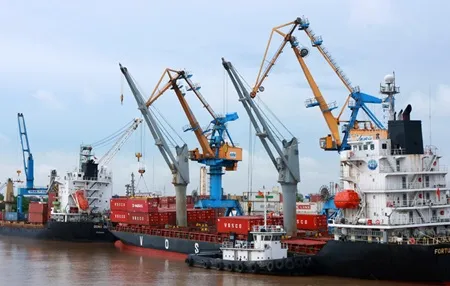CBRE: Hai Phong remains gateway to world

Over the last 10 years, Viet Nam's GDP has grown from US$66 billion in 2006 to $186 billion in 2014, at an average growth rate of 13 per cent annually, according to a report on logistics in Viet Nam written by CBRE Viet Nam, a foreign property service provider.
At the same time, inbound and outbound trade has expanded positively in value. The positive growth in economic performance has spurred the development of logistics infrastructures and the establishment of major logistics hubs supporting international trade.
The Viet Nam logistics system is in its early stage, as compared to global logistics networks. Since Viet Nam joined the WTO in 2007, total trade volume has surged by 168 per cent from 2007 to 2014. This has supported the growth in the development and improvement of the logistics sector. Further, annual throughput nationwide has doubled, from 4.9 million TEUs in 2008 to 10 million TEUs in 2014.
HCM City and Hai Phong have the two most important seaports in Viet Nam, according to CBRE Viet Nam. The annual throughput for these ports is growing, but throughput capacity at HCM City port is currently only equivalent to one-quarter of Hong Kong's, and one-sixth of Singapore's in 2014, while Hai Phong's capacity is about 50 per cent of that of HCM City.
From 2008 to 2014, annual throughput in the south of Viet Nam, increased by 105 per cent, with HCM City taking the lead. Over the same period, total throughput in the north of Viet Nam, with Hai Phong leading the way, increased 88 per cent.
Notably, for northern Viet Nam, Hai Phong contributed 98 per cent of the nation's total throughput in 2014. Hai Phong has advantages in location, with over 100 kilometres of coastal line, and has the potential of a rising logistics hub able to offer national and regional standards in the future. However, Hai Phong's logistics sector has not performed at its full capacity, primarily due to a lack of fully-integrated infrastructure.
With the completion of major infrastructures in the future, Hai Phong hopes to attract more foreign investors and become a logistics hub in the region, contributing to the growth of the country.
Meanwhile, under the Provincial Competitiveness Index (PCI) report 2014, Hai Phong only ranks 34th among 63 cities and provinces. Of those issues noted in the PCI report, transparency, infrastructures and labour quality are highlighted.
Therefore, in order to become a local hub in the near future, and regional hub in the long run, it is critical that Hai Phong addresses issues of administrative procedures, transparency, as well as pays attention to improving labour conditions.
At present, the Hai Phong local authority has worked to improve the city's infrastructure system and network, in connection with other cities and provinces, especially those key cities connecting regional logistics hubs, such as Ha Noi and Quang Ninh, according to CBRE Viet Nam.
Tags:





